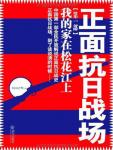Chapter 1 preamble
Fifteen years ago, at Luojia Mountain in Wuhan.
There are cherry blossoms everywhere, snow white and pink.Flowers set off people's smiling faces, and people reflect the color of flowers.Many people visited and walked by, including me.
Who planted these flower trees?
It's a shame to say it.It was an earlier era, a group of Japanese from Dongying island country, more precisely, a "commemoration" left by a group of Japanese soldiers.
Fifteen years later, when I was writing this book, many people on the forum asked me why you wrote that the War of Resistance began in the Northeast.
Indeed, the Anti-Japanese War in our memory has always been associated with the gunshot at the Marco Polo Bridge.
So, I thought again of the cherry blossoms blooming on Mount Luojia.
There is fertile black soil in the Northeast. They want to plant cherry blossoms on the black soil. Next, they will continue to plant them in Beijing, Shanghai, and Wuhan...
The truth is that simple, but it's not that simple.
Aren't cherry blossoms beautiful?It's beautiful, but it's not ours.
Under the gorgeous cherry blossom trees, they are ready to harvest our fruits and then spread their culture.
If nothing else, we will be their pariahs for generations.
But "accidents" still happened, and those Northeast men who were unwilling to give in were the first to resist.The top leaders of the Northeast Army, Mr. Zhang and his son, even paid the price of almost their entire lives for this, and all of this was for four words: resisting Japanese aggression.
Since the first Japanese with a gun set foot on Chinese territory, and from the first Chinese who jumped up to resist, the War of Resistance has already begun.
I hope that this point in time can be remembered by everyone, although this may just be my personal "view of history", although it may be ignored by the official history with a slight smile.
Even if it was shortened, nine years have passed since the Japanese soldiers planted explosives in Huanggutun to the July 7th Incident.Its time frame still exceeds the "eight-year war of resistance" that we are usually familiar with.
In fact, our rebellion never quite stopped.
However, the land is still being lost day by day.
Why did the Japanese army directly form an outflanking trend to Beijing when a shot was fired at the Marco Polo Bridge?
That's because before that, they had occupied the north of the Great Wall!
"If you want to save Japan today, you cannot save China."This "famous saying" was spoken by the Japanese in person.They must destroy China, destroy our culture and traditions, which led to the unbearable end of the Chinese people, and the full-scale outbreak of the Anti-Japanese War.
Today, both official and non-governmental, there is a basic view on the war of confrontation, that is, the Communist Party insisted on the battlefield behind the enemy lines, and the Kuomintang presided over the frontal battlefield, and this frontal battlefield did not start at Marco Polo Bridge. In fact, as early as the Battle of Songhu in Shanghai During the Great Wall Anti-Japanese War, the Chinese and Japanese government troops had fought many times.
Suddenly I thought of the cherry blossoms in Luojia Mountain.
As far as I know, there are still tourists wearing kimonos and taking pictures among the flowers.
Whether it is viewing flowers or taking pictures, there is no problem.The problem is that we should not forget that when Japanese soldiers planted cherry blossoms on the mountain, what kind of bloody resistance our ancestors did, and China is only half a step away from the fate of being destroyed.
It is for remembering.

